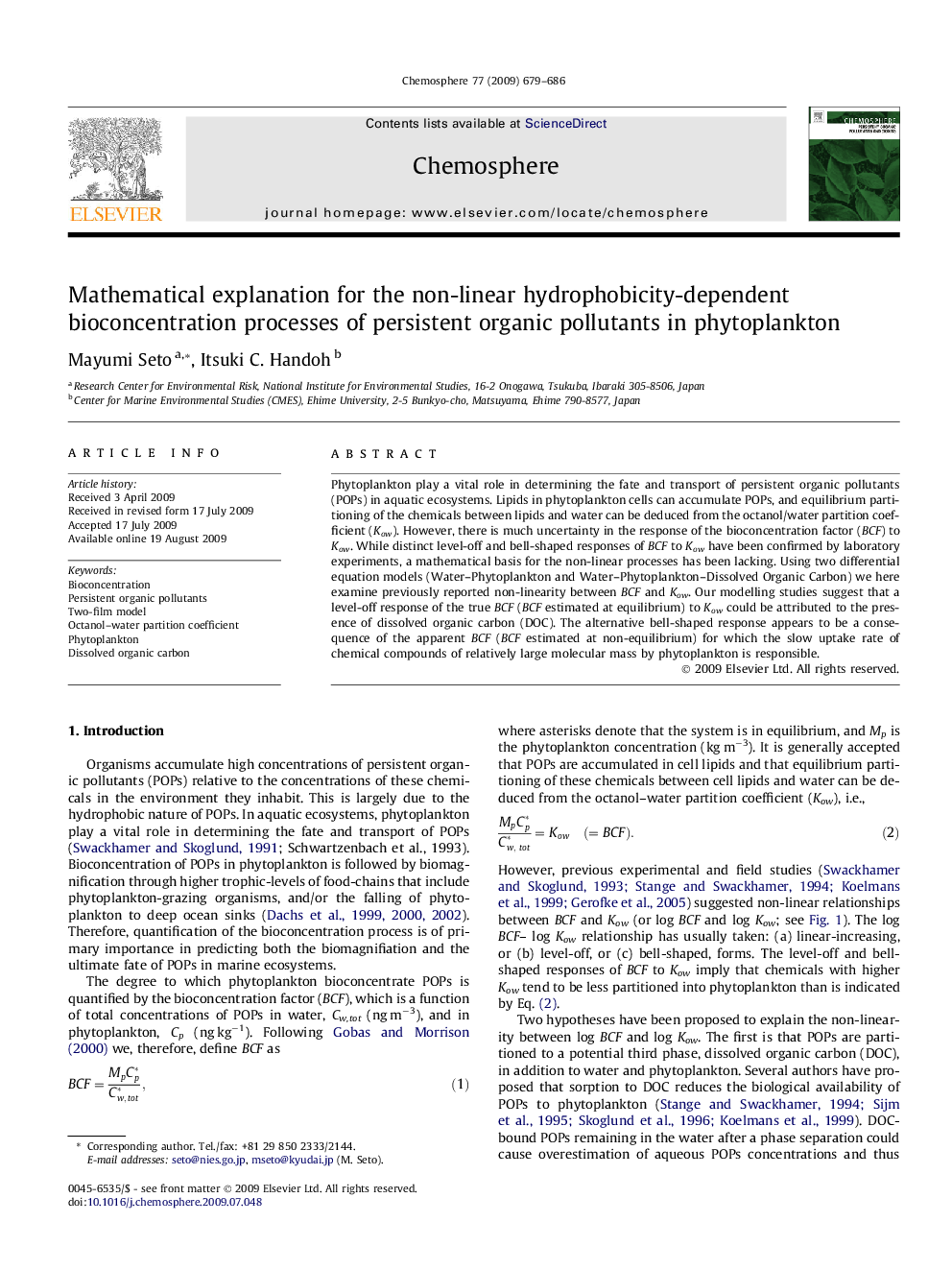| Article ID | Journal | Published Year | Pages | File Type |
|---|---|---|---|---|
| 4412100 | Chemosphere | 2009 | 8 Pages |
Phytoplankton play a vital role in determining the fate and transport of persistent organic pollutants (POPs) in aquatic ecosystems. Lipids in phytoplankton cells can accumulate POPs, and equilibrium partitioning of the chemicals between lipids and water can be deduced from the octanol/water partition coefficient (Kow). However, there is much uncertainty in the response of the bioconcentration factor (BCF) to Kow. While distinct level-off and bell-shaped responses of BCF to Kow have been confirmed by laboratory experiments, a mathematical basis for the non-linear processes has been lacking. Using two differential equation models (Water–Phytoplankton and Water–Phytoplankton–Dissolved Organic Carbon) we here examine previously reported non-linearity between BCF and Kow. Our modelling studies suggest that a level-off response of the true BCF (BCF estimated at equilibrium) to Kow could be attributed to the presence of dissolved organic carbon (DOC). The alternative bell-shaped response appears to be a consequence of the apparent BCF (BCF estimated at non-equilibrium) for which the slow uptake rate of chemical compounds of relatively large molecular mass by phytoplankton is responsible.
